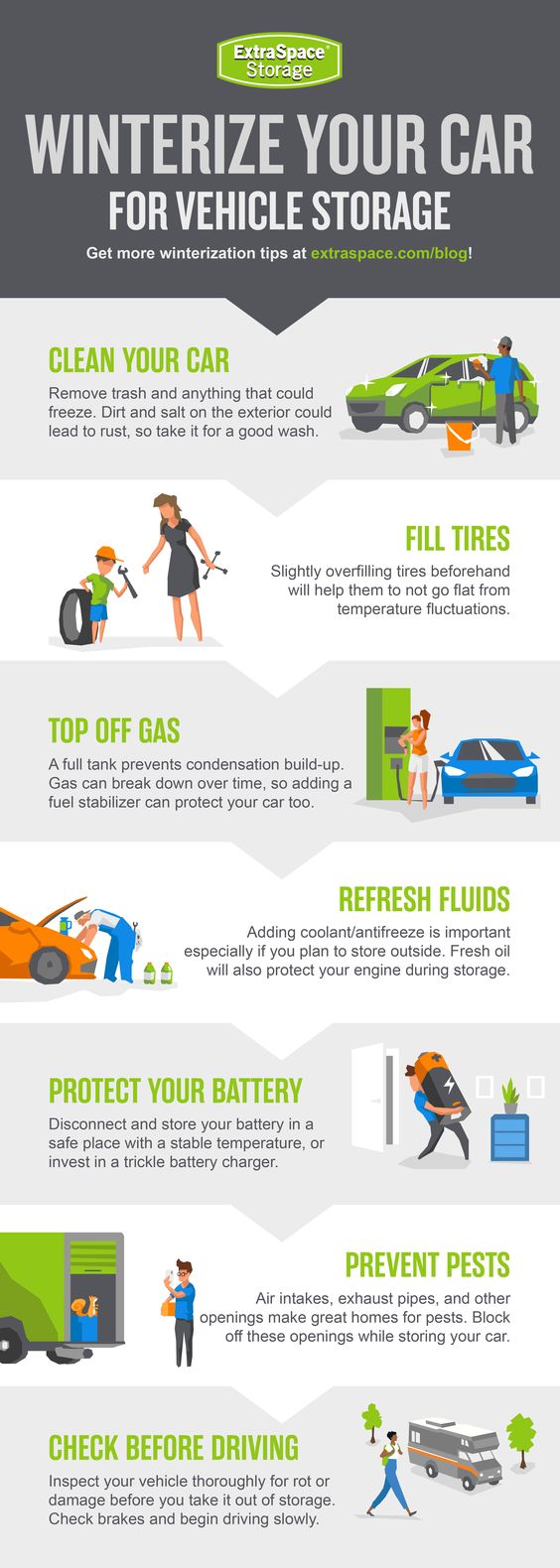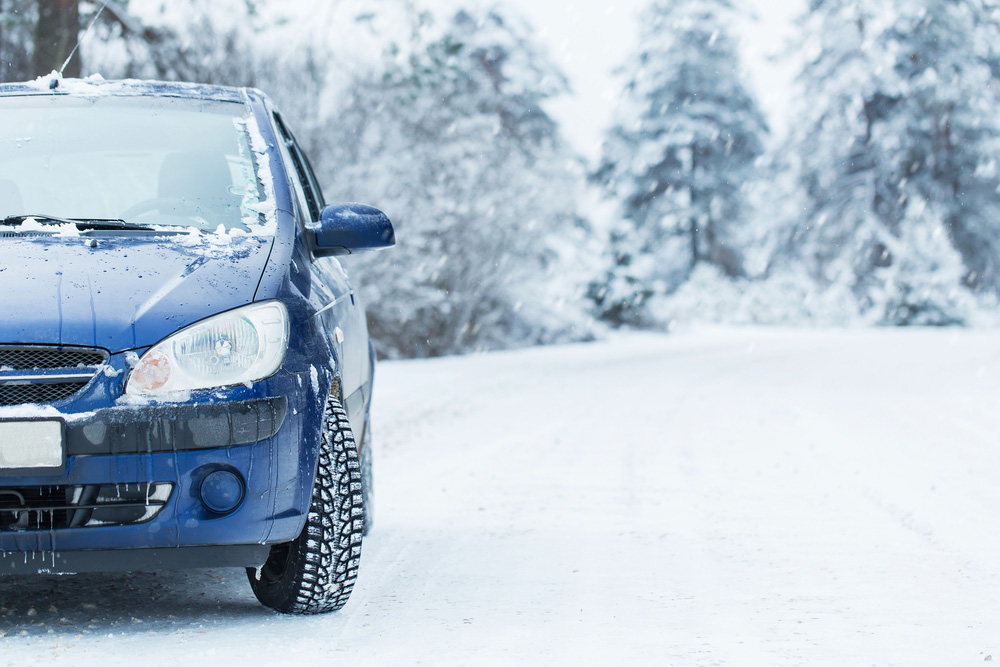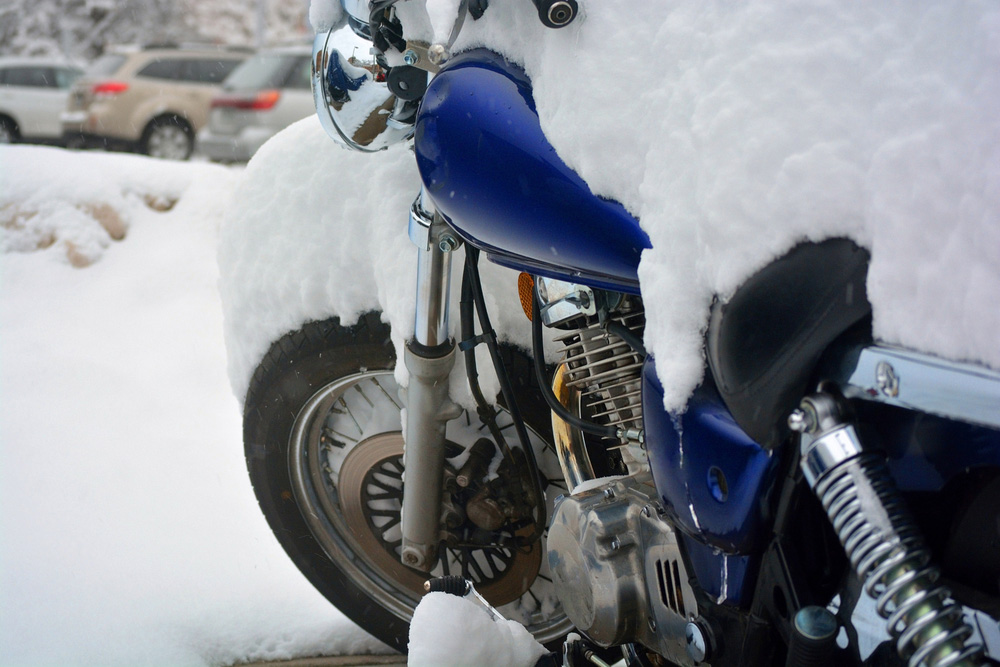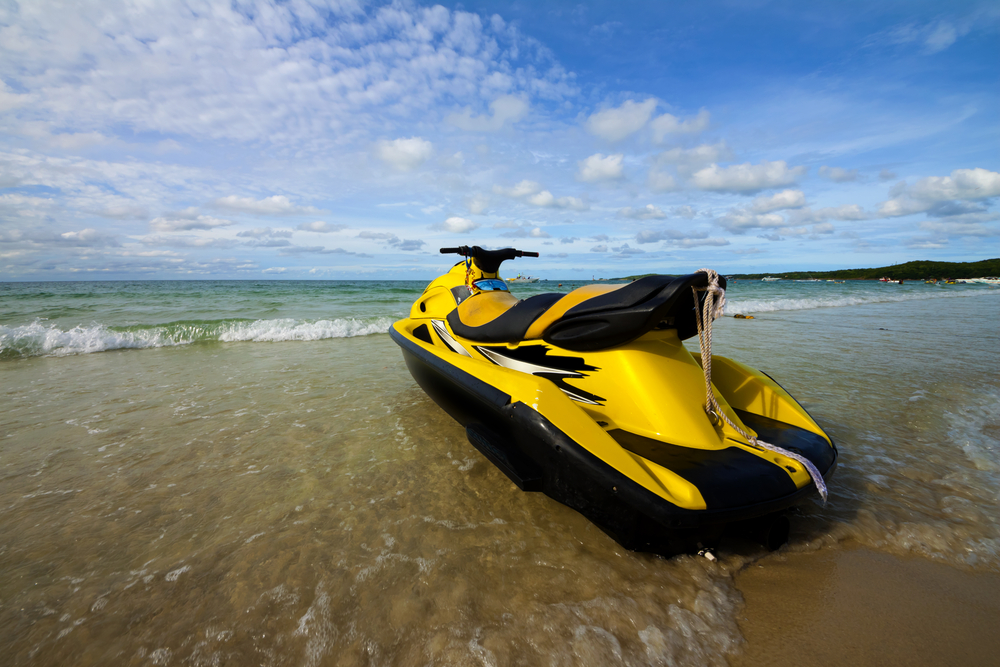Need to store a car for winter? Whether it’s a rear-wheel drive vehicle or a classic car that you don’t use in colder months, try these winter car storage tips to keep your car safe and protected from extreme temperature changes.
Things You’ll Need
- Cleaning supplies
- Vacuum
- Car wax
- Car cover
- Tire pressure gauge
- Fuel and fuel stabilizer
- Antifreeze
- Oil and filter
- Trickle charger
- Wheel chocks
- Fabric sheets and moth balls
Step 1: Consider Self Storage
If you don’t have garage space available for storing your car, you can rent indoor vehicle storage at a self storage facility. With climate control options, month-to-month rental agreements, and security features like video surveillance, a storage facility provides the flexibility and peace of mind you want. Learn more about vehicle storage and be sure to follow steps on how to properly store your car.
Step 2: Clean Out Your Car
If you’re not sure how to winterize a car for storage, start with cleaning it! Remove any trash, take out anything that could freeze, and vacuum any crumbs that could attract pests. Once you’ve deep cleaned the interior, spend some time on the outside. Any dirt or salt could lead to rust if left unattended for too long, so make sure to wash your car—including underneath your vehicle. A fresh wax can also help protect paint while in storage.
Step 3: Get a Vehicle Cover
A winter car cover is an awesome idea if you’re storing a car inside because your vehicle will stay dry, clean, and free of dust. But if your vehicle is sitting outside in the winter, a cover sometimes isn’t recommended because it can actually trap in moisture and accelerate rust and erosion. In this case, it’s a good idea to clear snow and ice from car from time to time.
Step 4: Fill Tires
Winterizing your car doesn’t have to be difficult! Adding extra air to tires before storing it can save you a lot of trouble when it’s time to drive again in the spring. Slightly overfilling tires before putting your car away is a smart idea to make sure they don’t go flat from fluctuations in temperature. Just be sure not to exceed the maximum PSI.
WHAT VEHICLE STORAGE UNIT SIZE IS RIGHT FOR YOU?
Step 5: Top Off the Gas
Filling up on gas before you put a vehicle in storage is a smart idea because it prevents condensation from building up in your fuel tank. Storing a vehicle long-term? Adding a fuel stabilizer to your gas can help protect your car if you plan on storing it for more than 30 days. This is because gas can break down over time, so it can be detrimental for your engine when it comes time to start it again.
Step 6: Refresh the Coolant
If you’ve ever wondered if your car needs antifreeze in the winter, the answer is yes. Adding more coolant (also known as antifreeze) is especially important if you’re storing a vehicle outside. Because of the risk of freezing, make sure your water-to-coolant ratio for winter is close to 50/50.
Step 7: Change Your Oil
A great winterizing car tip is to get an oil change before putting your car in storage. Fresh oil will protect your engine while it’s sitting and guarantee it’s ready to drive again when the weather warms up.
Step 8: Protect Your Battery
There are two main options to choose from when deciding how to store a car battery for the winter. Disconnecting a car battery for storage is a great idea as long as it’s somewhere dry, has a stable temperature, and is kept off of the floor. If you don’t want to deal with removing and reinstalling a battery, you could invest in a battery charger. A trickle charger will keep enough power running to the battery so it doesn’t die completely. Stop by your local auto parts store if you’re not sure which is best for your vehicle.
Step 9: Run the Engine Occasionally
How long can a car sit without being driven? That depends on the make and model of your car, as well as if it’s being stored indoors or outdoors. Ideally, you should start your car every few weeks and allow the engine to run until the engine heats up fully to ensure everything is in working order.
Step 10: Chock Your Wheels
Worried about your car staying in place? Wheel chocks are an outdoor car storage idea that will offer you peace of mind without putting unnecessary strain on your parking break. These pyramid-shaped blocks wedge under your front tires to ensure it doesn’t roll anywhere.
Step 11: Take Steps to Prevent Pests
Air intake boxes, exhaust pipes, and other openings around your vehicle can invite rodents and insects. Block off these openings while storing your car to keep pests out. Fabric sheets inside your car and moth balls on the outside are great ways to deter pests from making a home in your vehicle. Just make sure to remove any covers before you start your car!
Step 12: Check Everything Before Driving
Thoroughly inspect your vehicle for rot or damage before you take it out of storage for the season. Check your breaks and begin driving slowly. Depending on the length your car has been sitting without being driven, give it an ample amount of time to idle before you head back out on the open road.
***
Looking for a self storage option for your car? Extra Space Storage offers secure indoor vehicle storage, outdoor car storage, and covered vehicle storage options throughout the U.S. Find available storage units near you!






